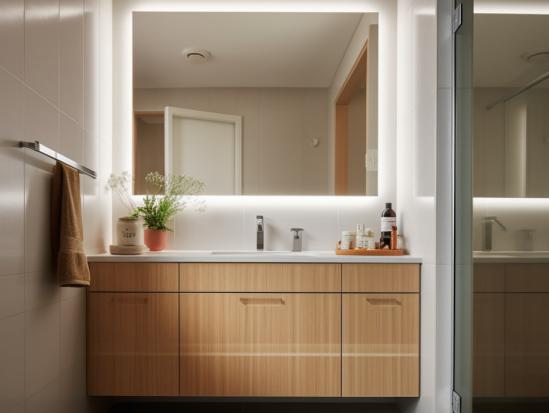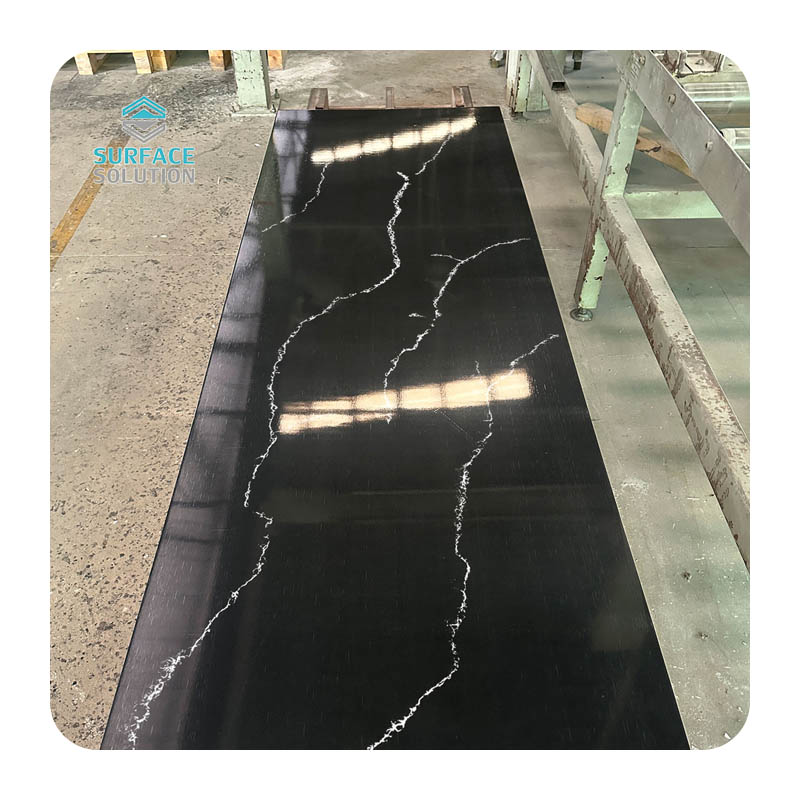
Solid Surface Acrylic Sinks – The Perfect Blend of Style And Functionality

The Comprehensive Guide to Solid Surface Sinks
Solid surface sinks have gained immense popularity in both residential and commercial spaces due to their aesthetic appeal and versatile functionality. Whether you're remodeling a kitchen or revamping a bathroom, understanding the benefits and practicality of a solid surface sink can help you make an informed decision. This guide dives into everything you need to know, including their features, care instructions, and how they compare to other materials like ceramic.
What is a Solid Surface Sink?
A solid surface sink is a type of sink made from a blend of acrylic resins, polymers, and natural minerals. This unique composition gives it a seamless and non-porous surface. These sinks are often part of an integrated countertop design, meaning the sink and the countertop are created as a single, continuous piece, leaving no seams or joints.

Key Features of Solid Surface Sinks
Seamless Integration
One of the standout features of a solid surface sink is its seamless construction. With no visible joints, it not only looks modern and clean but also eliminates spaces where bacteria or grime can accumulate.
Durability
The solid composition makes these sinks resistant to cracks, chips, and stains. This durability ensures they maintain their beauty and functionality for years to come.
Ease of Cleaning
Thanks to their non-porous surface, solid surface sinks don't harbor dirt or bacteria. Regular household cleaners are sufficient for maintenance, making them a convenient choice for busy households.
Design Flexibility
Available in a plethora of colors and finishes, solid surface sinks can complement any interior design style, from minimalist modern to classic traditional.
What Sets Solid Surface Integrated Sinks Apart?
Solid surface integrated sinks take functionality to the next level. Their innovative design seamlessly merges the sink with the countertop, ensuring a sleek and cohesive look. Cleaning is effortless, as there are no edges or lips where grime can hide.
Is Solid Surface Better Than Ceramic?
When choosing materials for your sink, aesthetics, durability, and practicality are often the main considerations. Here's how solid surface integral sink stack up against ceramic options.
Design Flexibility
Solid surface sinks offer unparalleled customization. They are available in a variety of colors, shapes, and finishes, making it easy to match them with any bathroom or kitchen design. On the other hand, ceramic sinks are more limited in terms of color and design options, often featuring standard shapes.
Durability
While ceramic sinks are often robust, they can chip or crack under heavy impact. Solid surface sinks, on the other hand, are more resistant to such damages and maintain their structural integrity even in high-traffic areas.
Ease of Repair
Over time, minor scratches or stains may appear on any type of sink. With solid surface sinks, these imperfections can easily be buffed or sanded out, restoring their original appearance. Ceramic sinks, however, are much more difficult to repair and often require professional attention.
Non-Porous Hygiene
Both ceramic and solid surface sinks boast non-porous surfaces that are resistant to water absorption. However, solid surface materials often have better antibacterial properties because of their seamless finish, which leaves no room for bacteria to accumulate.
Verdict
Between the two, solid surface sinks emerge as the more versatile and robust choice, particularly for those who value flexibility in design and long-lasting durability.

Are Solid Surface Basins Hard to Clean?
Solid surface sinks are remarkably easy to maintain when compared to other sink materials like stainless steel or ceramic. Here are some tips for keeping your solid surface basin sparkling clean:
Daily Maintenance
Use a soft microfiber cloth or a non-abrasive sponge paired with mild dish soap to clean the surface. Wipe the sink gently in circular motions to remove any residue or dirt.
Avoid Abrasives
Stay away from harsh scrubbers, scouring pads, or abrasive cleaning powders—they can scratch or dull the surface. Instead, opt for specially formulated cleaners for solid surface materials.
Tackle Stains Quickly
Although solid surface sinks resist staining, cleaning up spills immediately helps prevent any marks from setting. A mixture of baking soda and water can be used to lift tougher stains without damaging the finish.
Periodic Polishing
To maintain its glossy finish, some manufacturers recommend periodic polishing of your solid surface basin using non-abrasive polishers.
Table of Recommended Cleaning Tools
Cleaning Tool | Usage |
|---|---|
Microfiber Cloth | Wiping away dust and light dirt |
Non-Abrasive Sponge | Gentle scrubbing of residues |
Baking Soda Paste | Removing light stains |
Mild Dish Soap | Everyday cleaning solution |
With proper care, your solid surface sink will remain in pristine condition for years to come.
Benefits of Choosing a Solid Surface Sink
Hygienic and Non-Porous Surface
The solid surface material doesn't allow water, bacteria, or grime to seep in, ensuring that your sink stays clean and germ-free.
Customizable and Stylish
From bold colors to minimalist matte finishes, solid surface sinks are tailored to suit any design preference.
Low Maintenance
Cleaning and maintenance require minimal effort compared to traditional sink materials.
Eco-Friendly Options
Many solid surface manufacturers employ eco-friendly production methods, ensuring a sustainable choice for your home or business.
Frequently Asked Questions
What is a solid surface sink?
A solid surface sink is crafted from a durable blend of acrylic resins, natural minerals, and polymers. This seamless and non-porous sink is perfect for modern kitchens or bathrooms that prioritize hygiene, aesthetics, and functionality.
Is solid surface better than ceramic?
Yes, solid surface sinks are generally considered better than ceramic due to their design flexibility, durability, and ease of repair. They are less likely to chip and are available in more customizable color and style options.
Are solid surface basins hard to clean?
Not at all. Solid surface basins are easy to clean using a microfiber cloth or a damp sponge with mild cleaning agents. Just make sure to avoid abrasive scrubbers to maintain their sleek finish.
Why Choose Solid Surface Acrylic?
When it comes to solid surface sinks, solid surface acrylic stands out as one of the most reliable options. Its strength, versatility, and ease of maintenance make it a top choice for homeowners and designers. Not only does it provide a luxurious look, but its non-porous nature also ensures maximum hygiene, a crucial factor in areas like kitchens and bathrooms.
Whether you're designing a new space or upgrading an existing one, consider investing in a solid surface acrylic sink for the ultimate combination of style and practicality.
For more details or inquiries about solid surface sinks, feel free to contact us:
Email: sales7@surface-s.com
Phone: +86-13802609114

Make the smart choice for your home with a solid surface sink that blends beauty, functionality, and reliability.
Solid Surface sink
solid surface integrated sink
solid surface integral sink
Related Blogs
-
 What Is Solid Surface Material? A Complete GuideIn the world of interior design and home renovation, "solid surface material" is a term frequently heard—but what exactly is it? Unlike natural materials mined from the earth or rigid synthetic alternatives, solid surface is a engineered man-made mater
What Is Solid Surface Material? A Complete GuideIn the world of interior design and home renovation, "solid surface material" is a term frequently heard—but what exactly is it? Unlike natural materials mined from the earth or rigid synthetic alternatives, solid surface is a engineered man-made mater -
 What Are Solid Surface Countertops Made Of? A Comprehensive BreakdownSolid surface countertops have become a popular choice in modern kitchens and bathrooms, celebrated for their seamless appearance, durability, and versatility. Unlike natural stone (such as granite or marble) or ceramic tiles, soli
What Are Solid Surface Countertops Made Of? A Comprehensive BreakdownSolid surface countertops have become a popular choice in modern kitchens and bathrooms, celebrated for their seamless appearance, durability, and versatility. Unlike natural stone (such as granite or marble) or ceramic tiles, soli

















